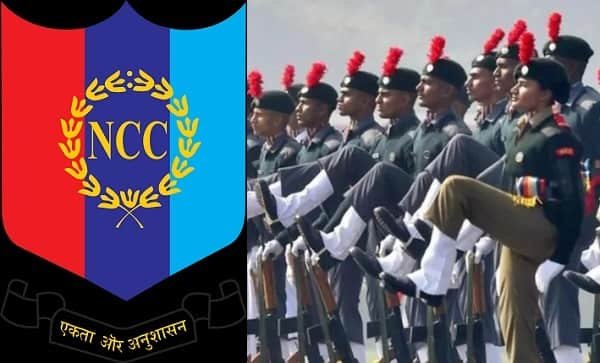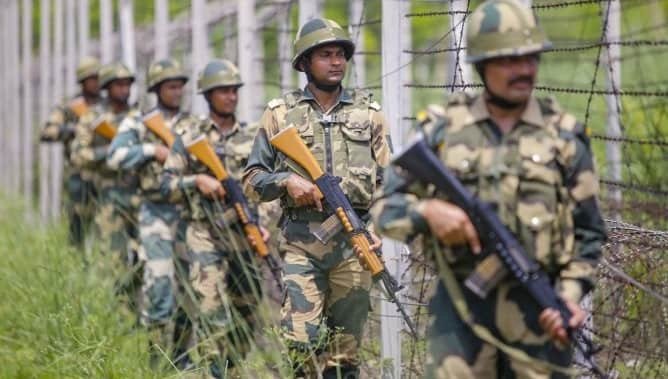Before explaining how to join NDA, you must understand first what is NDA and why is it important to the Indian Armed Force. A candidate must know everything about NDA before planning to set a goal to peruse a course in NDA.
What is NDA?
National Defence Academy (NDA), yes, most of the people who are reading this article would know this, however, do you really know, what NDA does and why is it important?
National Defence Academy is not like any other universities or colleges, this one is a joint services educational and training institution of the Indian Armed Forces. This institute is situated in Khadakwasla, Pune. Unlike all the other institutes in India and around the world, the NDA is the only one institute that offers military training to candidates planning to peruse a career in the Indian Army, The Indian Navy and The Indian Air Force. The NDA is the 1st and the only current Tri-service military institution in the world.
The foundation stone for this institute was laid by Nehru in 1949 and the academy as we know it today was fully established in 1954. The NDA offers UG courses in such the candidates are provided a bachelor’s degree after a period of 3-years of training. This does not mean, the candidate does not have the option to select any stream. The candidates enrolled in this institute could choose the science stream or humanities. The science stream would include subjects like physics, computer science, chemistry, and mathematics. The humanities stream would include subjects like political science, geography, economics, languages, and history.

When it comes to NDA, it is different from all the institutes and universities in the world. The eligibility criteria itself is very diverse and a bit complex.
NDA eligibility criteria –
To attend the NDA exam, the applicant should satisfy the criteria listed below. If the applicant’s data does not match these eligibility criteria, he/she could be barred from attending the exam.
1. Nationality –
- The applicant should be an Indian citizen from India or Nepal or Bhutan
- Refugees from Tibet who have entered India before 01/01/1962 to become an Indian citizen could also apply for this exam.
- A applicant with Indian origin but migrated from Sri Lanka, Burma, Pakistan, and East African countries namely Kenya, Uganda, Zambia, Zaire, Ethiopia, Malawi, United Republic of Tanzania, Vietnam, to become an Indian citizen are also eligible to attend this exam.
Any other candidates and Gurkha subjects of Nepal should produce and submit, the certificate of eligibility issued by the Indian government.
2. Gender, age, and marital status –
- The age criteria should be attained from the official UPSC website as it could change based on the year.
- The applicant should not be married to attend the exam, if the candidate is married, he/she cannot attend the exam. If the candidate attends the exam and gets married after the exam and before the training, the candidate will not be admitted for the training.
- Date of birth of the applicant mentioned in the Higher Secondary Examination Certificate will be accepted by the authorities.
- If the candidate gets married while in the training period, he/she would be dismissed and discharged from the NDA and he/she will have to pay the expenditure incurred on him by the government.
3. Qualification –
The qualification eligibility criteria for each branch of the Indian Armed Force are different, they are as follows.
For the Indian Army –
- The applicant should have completed the 12th standard from an Indian Government recognized state or central board.
- A candidate appearing for the current year 12th board exam could also apply for the examination.
For the Indian Navy and Indian Air Force –
- The applicant who is planning to take the entrance test for the Indian Navy or the Indian Air Force should have passed the 12th standard from an Indian Government recognized board.
- The applicant should have opted for a science stream that includes physics and mathematics as the core subjects. If not, the candidate is not eligible to join the Indian Navy or the Indian Air Force.
4. Physical standards –
The physical standards to apply for the NDA exam is diverse, there are one of two pages of physical standards. However, for applying for the exam, these standards do not matter, but, if you crack the exam, and join the NDA if you do not have these physical standards, then you could be thrown out. Remember, once you are thrown own, resigned, or withdrawn from a training academy of the Indian Armed Force, there is no second chance. You will be ineligible for a second try.
Here are a few of the common physical standards that a candidate must satisfy –
- The medical issues listed here make a candidate ineligible for a career in the Indian Armed Force, Ear Wax, Piles, Tonsillitis, Undersized chest, Varicocele, Overweight/Underweight, Phimosis/Hydrocele, Deviated Nasal Septum, and Gynaecomastia.
- Permanent body tattoos are allowed only if there are on the inner face or forearm. No other body tattoos will be accepted.
- If the body tattoos are related to a tribe or pre-existing custom or traditions, they could be allowed.
- If the candidate has a body tattoo, there is competent authority to review and clear and authorize it.
- Minimum height for Navy and Army is 157 cms and for Indian Air Force 162.5 cms.
- If the candidate is from the North-eastern hilly areas of India or a Gurkha, then 5 cms relaxation on minimum standard height requirement is given.
- For applicants from Lakshadweep, there a height relaxation of 2 cms.
- Other standard weight and height details based on the age group are published on the official NDA and UPSC website.
- The applicant should not have any pre-existing physical or mental issues.
- There should be no blood pressure variation and heart issues.
- The liver and spleen should not be expanded.
- X-Ray examination would be conducted if you are recommended to the SSB.
5. Visual standards –
- If the applicant has Myopia, it should not be over 2.5 D and hypermetropia should not be over 3.5 D.
- When it comes to distant vision, the candidate should have 6/6 in one eye, and in the worst eye should not exceed 6/9.
These are some of the common physical and visual standard eligibility criteria, there are more than the ones mentioned above, however, mentioning each one of them could be waste of time.
Now, you know all the details related to NDA and eligibility criteria. Here is how to join NDA.
How to join NDA?
The admission to NDA is not open for direct admission or any other methods. The selection process is always done through the methods mentioned below.
- The candidates who seek to get admission in NDA to peruse a career in the Indian Armed Force should first apply, attend, and pass the NDA & NA entrance exam.
- The admission to NDA is allowed at two months. January and August.
- The application for the NDA &NA entrance test should be submitted online. There is no offline method. If anyone claims or promises you otherwise is a fraud or illegal.
- The applicant should be at least 16-years old and the maximum age limit to attend the entrance test is 19-years.
NDA offers, three different UG courses, BA, B.Sc., and B.Tech. the candidate could peruse any one of the UG courses. BA and B.Sc. do not have any specializations, but, when it comes to B.Tech. a candidate could peruse, mechanical engineering, computer science & IT, communication engineering, and applied electronics. If you need to join the Indian Air Force, you need to attend and pass the Pilot Aptitude Test.
NDA Selection process –
- Entrance test –
As already mentioned, admission in NDA cannot be acquired without attending and passing the NDA & NA entrance exam. The NDA & NA exam is conducted by the UPSC. Once you pass the entrance exam, you will have to attend the SSB interview.
- SSB interview –
The service Selection Board interview is a 5-day long process that is scheduled based on the rank secured in the entrance test. The SSB interview is split into two stages.
Stage 1: screening round –
This stage is commonly referred to as the screening round where the candidate has to attend 2 tests, OIRT (Officer Intelligence Rating Test) and PPDT (Picture Perception & Discussion Test). These two tests consist of a question that could evaluate the candidate’s reasoning, intelligence, and general aptitude. The stage 1 screening round is commonly conducted on the first day of the SSB interview.
Stage 2: 5 different tests –
In the remaining 4-days of the SSB interview, stage 2 is conducted. Only candidates who have qualified the stage 1 could move to this stage. Stage 2 consists of 5 different tests.
- Psychological test
- Personal interview
- Ground tasks officer
- Conference round
- Medical examination.
The candidate has to qualify for all these 5 exams, failing even in one exam is not accepted.
- Medical test –
This is the medical test we talked about before mentioning the physical standards. While the medical test is done only after the SSB interview. It is done only if the candidate qualifies for all the other 5 tests. The medical test itself is a 1-week process. If the candidate does not qualify for the medical test, he/she will be discharged.
If the candidate qualified for the medical examination and all the other tests, he/she could move to the next round.
- Final selection –
Final selection would be done based on all the 3 rounds, the entrance exam rank, SSB interview result, and the medical test outcome. If the result of all these rounds are favourable and meets the criteria set by the commission, then he/she will be asked to appear for the document verification process.
- Documents verification –
If you are on the list after the final selection process, then you need to appear before the commission for document verification. Here are the documents that you need to present before the Service Selection Centre (SSC).
- 10th and 12th standard pass certificate
- Eligibility certificate
- Identity proof
- Caste or category certificate
- Passport size photographs
- Proof of residence
The candidate needs to present the original documents and also carry more than one copy of every document. If you fail to submit or present any document, you could be disqualified.
Once you have successfully submitted all the required documents, you will be notified of your admission to NDA.
NDA & NA entrance test pattern and details –
- NDA & NA entrance test is conducted twice a year through offline mode.
- The entrance exam comprises of two sections, General ability test, and Mathematics.
- The total duration of the exam is 5-hours for both sections.
- The entrance test is objective type, multiple choice questions would be asked.
- The total marks for this exam is 900. Total 270 questions, out of which 120 questions are from the General ability section and 150 questions from Mathematics. 300 marks for mathematics and 600 marks for general ability tests.
- NDA & NA entrance exam is based on the 10th and 12th standard syllabus.
Mark distribution of mathematics and General ability test –
- For each correct answer in mathematics 2.5 marks are awarded and for each wrong answer, 0.83 marks are deducted.
- For each correct answer in the general ability test, 4 marks are awarded and for each wrong answer, 1.33 marks are deducted.
- The subjects that come under general ability tests are
- English – 200 marks
- Physics – 100 marks
- Chemistry – 60 marks
- General science – 40 marks
- History – 80 marks
- Geography – 80 marks
- Current events – 40 marks.
How to apply for NDA & NA entrance exam?
To apply for the NDA & NA entrance test, you need to visit the official website of NDA or UPSC website. Here are the websites for both.
NDA – https://nda.nic.in/
UPSC – https://www.upsc.gov.in/
Stay tuned to these websites to keep track of the application process.
Once the application process starts, complete both parts of the registration process. The first part involves submitting the basic information of the candidate and the 2nd part involves paying the application fee, select the exam centre, uploading photographs, sign, etc. While the application could be submitted only online, the application fee could be paid both online or offline. After completing the application process, save the application form copy, proof of fee payment, and identical photographs.
After the application is submitted, an admit card for the entrance exam will be issued, you need to download it from the official UPSC website. If the admit card is issued, the official UPSC page will publish it. Click the link and login with the credentials sent to your registered email ID. Login and download the admit card.
It is not an easy task to get admission in NDA, the demand for seats is very high as all the three branches of the Indian armed forces draw candidates from NDA. If you do not secure a competitive rank in the entrance exam, it could be hard to get a seat in NDA.
How can I prepare for the NDA entrance exam?
The National Defence Academy (NDA) entrance exam is the gateway to a prestigious career in the Indian Armed Forces, where honor, discipline, and courage are the hallmarks of service. Aspirants dreaming of donning the uniform and serving the nation find themselves facing a rigorous selection process. Successful preparation demands a blend of dedication, discipline, and strategic planning. In this article, we unveil a comprehensive guide on how to prepare effectively for the NDA entrance exam.
- Understanding the Exam Pattern:
Before embarking on your preparation journey, it’s crucial to understand the NDA exam pattern. The examination consists of two papers – Mathematics and General Ability. The Mathematics paper assesses quantitative aptitude, while the General Ability paper evaluates English proficiency, general knowledge, and reasoning. Familiarize yourself with the syllabus and question paper format to tailor your preparation accordingly.
- Create a Study Schedule:
Discipline is a cornerstone of military life, and the same applies to NDA exam preparation. Develop a realistic and well-structured study schedule that allocates sufficient time to each subject. Balance your focus between Mathematics and General Ability, ensuring that you cover the entire syllabus before the exam.
- Strengthening Mathematical Skills:
Mathematics is a crucial component of the NDA entrance exam. Focus on building a strong foundation in algebra, trigonometry, geometry, and calculus. Regular practice with a variety of problems and time-bound mock tests can significantly enhance your problem-solving skills.
- Mastering General Ability:
The General Ability paper demands proficiency in English, general knowledge, and reasoning. Enhance your vocabulary by reading newspapers, magazines, and novels regularly. Stay updated on current affairs and historical events, as these are integral to the general knowledge section. Practice English grammar, comprehension, and logical reasoning through consistent exercises.
- Physical Fitness:
Success in the NDA entrance exam extends beyond academics; physical fitness is equally vital. Incorporate a daily exercise routine that includes running, push-ups, sit-ups, and other activities to improve endurance and strength. A fit body complements a sharp mind, aligning with the holistic nature of military training.
- Mock Tests and Previous Year Papers:
Acquaint yourself with the exam environment by taking regular mock tests. This not only enhances time management skills but also provides a real-time assessment of your preparation. Analyze previous year papers to understand the recurring patterns and types of questions asked, helping you tailor your focus accordingly.
- Revision Strategy:
Consistent revision is the key to retention. Set aside dedicated time for periodic revision of concepts, formulas, and important facts. Create concise notes summarizing each topic to facilitate quick review in the days leading up to the exam.
- Stay Positive and Stay Healthy:
Maintaining a positive mindset is crucial during the preparation phase. Surround yourself with supportive peers, mentors, and family members who encourage your aspirations. Additionally, prioritize mental and emotional well-being. A healthy mind is better equipped to handle stress and challenges.
Conclusion:
Preparing for the NDA entrance exam is a transformative journey that demands commitment, resilience, and a strategic approach. By aligning your study plan with the exam pattern, focusing on both academics and physical fitness, and maintaining a positive mindset, you’ll be better prepared to face the challenges of the selection process.

Rahul Kumar is a passionate educator, writer, and subject matter expert in the field of education and professional development. As an author on CoursesXpert, Rahul Kumar’s articles cover a wide range of topics, from various courses, educational and career guidance.



